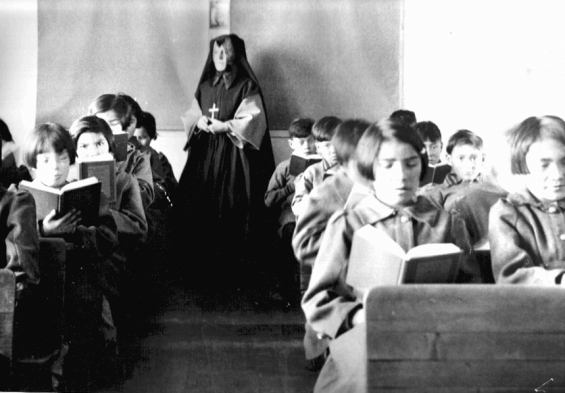
Recent news has come to light that the Canadian government has spent $3.2 million over the last eight years to obstruct attempts by survivors of St. Anne’s Residential School from seeking compensation. Much of the costs are associated with the government’s fight to prevent over 12,000 documents from being released uncensored. Despite all of the rhetoric by Justin Trudeau and the Canadian government regarding “reconciliation,” their hypocrisy is clear for all to see.
The horror of residential schools
The history of the residential schools is a legacy of racism and brutality against Indigenous peoples. Established in 1876 with the implementation of the Indian Act, the residential schools were run by the Catholic and Anglican churches, and were empowered to forcibly remove children from Indigenous communities. These schools became horrific centres of abuse for the 150,000 children who would pass through them between the 1870s and 1996, when the last one was finally closed.
There are numerous reports of children being lashed, beaten, locked in small confinement cells for weeks at a time, and being given diets of water and bread. Physical and sexual abuse were common in these schools. St. Anne’s Residential School, located in Fort Albany, Ontario, was particularly gruesome, with a homemade electric chair to shock children into compliance and where some children were forced to eat their own vomit as punishment for being sick.
Along with the abusive treatment, the children were robbed of their culture, religion, and languages. In many schools, children were even robbed of their identity and referred to only by numbers. Once the survivors were returned home to their families, they were alienated, as they were unable to speak their traditional languages and unfamiliar with their own cultural practices.
Covering their tracks
In all, over 3,200 Indigenous children would die in these schools from disease, suicide, and neglect. Many died from exposure to the elements during escape attempts. The real details of these deaths may never be known, as the Canadian government has a long history of destroying documents that could be used to prosecute the abusive church officials who ran the residential schools. Between 1936 and 1944 alone, 200,000 Indian Affairs files were destroyed.
In the 1990s, Ontario Provincial Police investigated claims of abuse at St. Anne’s, resulting in some convictions of former staff. However, over 12,000 documents from these investigations were never released to the public or made available to the former students seeking compensation. In 2014, the Ontario Supreme Court forced the government to release the documents, but in the end, the released versions were heavily redacted.
Fake apologies and crocodile tears
In 2008, Prime Minister Stephen Harper officially apologized for the abuse inflicted on Indigenous communities by the residential school system and established the Truth and Reconciliation Committee (TRC). In 2015, the TRC concluded in its final report that this system was created to commit “cultural genocide”.
Justin Trudeau has also regularly apologized for the conditions suffered by Indigenous people. Famously, he cried on stage apologizing to neglected Inuit tuberculosis patients, proving his years as a drama teacher have taught him well! However, despite his tears, Justin Trudeau has not changed federal government policy regarding residential school survivors. In rhetoric and on stage, the Canadian government wants reconciliation with the Indigenous peoples of the country, but in practice, very little has changed.
To this day, over 60 First Nations Reserves still maintain boil water advisories, and as many as 33–50 per cent of the homeless population of Canada is Indigenous. The unemployment rate for Indigenous people living off reserve was 16.8 per cent in August 2020, 5.6 per cent higher than the non-Indigenous population. Unemployment figures for those living on reservations is undoubtedly much higher.
The capitalist state cannot allow any meaningful reconciliation to take place, as it would fundamentally undermine the interests of the capitalist class. Small gestures and tearful apologies cannot reconcile Indigenous people with all that has been taken away from them. Even as the faces of the capitalist class change, the reality remains the same: reconciliation is a sham. A ruse to distract us while massive profits are made.

